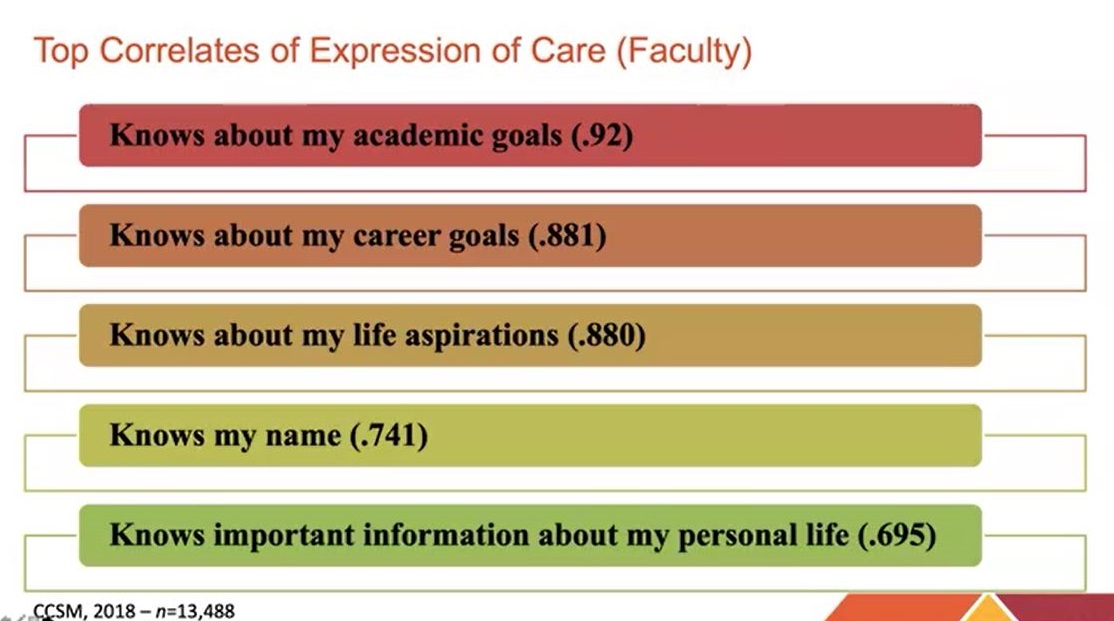Get to Know Your Students
Learning about your students is foundational to developing an ethos of care in the classroom. It starts on the first day of each class. Be intentional about designing introductory activities that will help you learn about your students, and just as importantly, for them to learn about each other.
Harris III & Wood (2020) suggest the importance of engaging with students not just on academic matterx, but also engaging on matters that have nothing to do with the course content. Beginning conversations such as these, and giving students opportunity to share, are the basis for forming relationship with students.
At the start of class
If you haven’t yet, consider having students upload a photo and a short bio to their Canvas profile page (and be sure to do the same if you have not already). Be sensitive to the fact that some students may feel uncomfortable uploading a personal photo, and may choose instead to upload an avatar… a photo of their favorite animated character, creature, super hero, etc. For the short personal description, provide some prompts: They could share their name, hometown, hobbies and activities, special talents, favorite music or movie genres, etc.
It’s important for the students to learn each others’ names as well, which can help combat invisibility. Consider setting up an introductory forum: Whether in an online discussion forum or during a class session online, ask each student to share their preferred name and pronouns and something simple about themselves – for example, pick an item or two from the list above. Students could also record and post for sharing a one-minute video about themselves – this could even be done as an assignment, and you as instructor could prepare a video also.
Using students’ names
Try to address the student by name whenever possible (one of Highline’s 4 Connections). Opportunities to interact with the students by name include when giving feedback, when sending messages or emails, and so forth. When you interact with students, state their names as part of the interaction. For example, when leaving comments for students in Canvas, you could write the student’s name into the comment where it feels natural/conversational.
Learning students’ goals – an expression of care
In a Community College Survey of Men sample of 13,488 students, randomized across course sections, Harris & Wood (2020) examined top correlates of expression of care. They measured to what extent that students perceived faculty members cared about them, and identified the top five predictors of expression of care. If these five conditions were in place, students were most likely to say that their instructor expressed care to them.

When students felt well-cared for, 85% said they are on track to achieve their academic goals. But when students said they did not feel cared for, only 68% said they were on track to achieve their goals. So care is not just good because it makes people feel good it’s important because it directly related and translates to student success.
Professional development opportunities
SETI – Search for EdTech Intelligence Drop-in Lab
SETI – Search for EdTech Intelligence Drop-in Lab
AI CoP Brown Bag Lunch
SETI – Search for EdTech Intelligence Drop-in Lab
SETI – Search for EdTech Intelligence Drop-in Lab
Related books in the LTC collection
(list coming soon – please check back)
Additional resources and scholarship
Culturally Responsive Educators Libguide (Highline Library)
Anti-racist Libguide (Highline Library)
APIDA (Asian Pacific Islander Desi Americans) Racial Justice Libguide (Highline Library)
Watch Darryl Brice and Woody Moses present on building community with students in the classroom (Highline login required). video recording
Highline Culturally Responsive Campus Canvas resources
(Highline login required. Email the LTC for access to the Canvas shell).
A central tenet of cultural responsiveness is getting to know and building relationships with the people we work with — whether they are students, colleagues, or community members. Therefore, working with students in a culturally responsive way means getting to know them, both as members of social identity groups and as individuals.
These Canvas resources contain ten separate modules designed to help faculty and staff learn and reflect about different cultures represented on campus.
Highline 4 Connections Canvas resources
The 4 Connections are simple practices that many faculty members already apply to build relationships with their students. Perhaps their beauty is that they are the least revolutionary student success intervention you will ever hear about. The power of The 4 Connections comes from your commitment to practice them intentionally and to continuously improve how you apply each of the practices to your interactions with students.
Interact with students by name
Learn your students’ names and begin using them on the first day of class and throughout the quarter.
Check in regularly
Pay attention to student behavior and track student progress. Empathize with students. When a student is struggling, intervene. Refer students to campus resources.
Schedule one-on-one meetings
During the course of the quarter, schedule required one-on-one meetings with students.
Practice paradox
Structure your course clearly. Communicate your expectations regularly. Then, be reasonably flexible when students come to you with concerns.
References:
Alfasi, M. (2003). Promoting the will and skill of students at academic risk: An evaluation of an instructional design geared to foster achievement, self-efficacy and motivation. Journal of Instructional Psychology, 30(1), 28–40.
Harris III, F., Lowe, A.N., & Wood, L. (2020, May 28). How to express care with a focus on racial equity [Webinar]. In CORA Learning Webinar Series. Retrieved from https://app.box.com/s/0qg9vbq0bzvsy8k5gu7sxwy0us3fbs5o
Harris III, F., & Wood, L. (2020, March 26). Employing equity-minded and culturally-affirming teaching practices in virtual learning communities [Webinar]. In CORA Learning Webinar Series. Retrieved from https://www.youtube.com/channel/UCzfia71ZxMOW-UM4rfBxoxA

